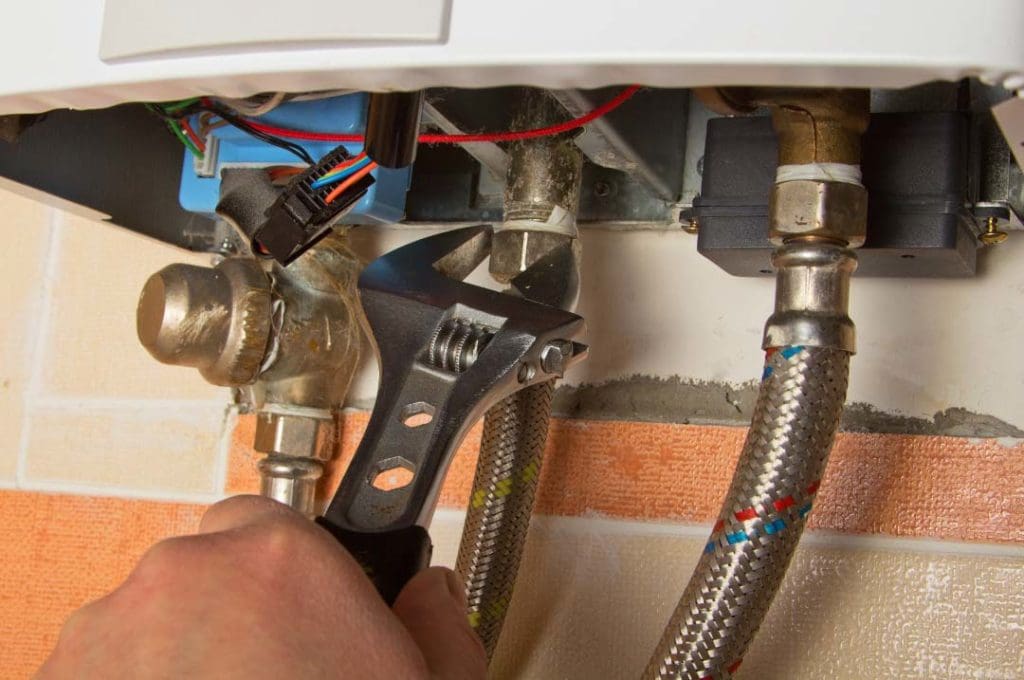
Your furnace ensures a healthy and comfortable space during the cold season. The heating system will be at its optimal performance level if you ensure all components are in their best condition.
Among the critical furnace components is the heat exchanger. This component is responsible for the heat exchange between the combustion gas and the air in your home. If the heat exchanger fails, your furnace will become inefficient and may fail altogether.
Luckily, a failing heat exchanger manifests in easily noticeable signs—here’s what to look for.
Yellow Flame
Normally, furnaces produce a blue flame. If the flame suddenly turns yellow or orange, that signifies an inefficient furnace, possibly due to a cracked heat exchanger or a dirty burner.
A yellow flame means your furnace is not burning efficiently, resulting in carbon monoxide production. Consequently, you may experience signs of carbon monoxide poisoning, which may be deadly in extreme cases.
Besides flame color change, inefficient combustion may cause excess soot production. The soot is a by-product of incomplete combustion, which is dangerous as it produces carbon monoxide.
If the flame is yellow and flickering, you may have a more serious underlying problem. If you notice a yellow flame coming out of your furnace, switch off the system immediately and contact a professional for immediate diagnosis and repairs.
Noisy Furnace
A healthy furnace is quiet and produces minimal noise. However, if you can hear scraping, popping, or banging noises from the heating system, a broken heat exchanger is the most likely cause. The issue is especially true if the noise emanates from the furnace cabinet.
The heat exchanger is metallic. If broken, this component may expand and contract due to the heat produced, which explains the sounds.
A loud furnace could indicate other problems, such as dirty filters, duct issues, and dirty burners. Therefore, don’t automatically assume that the heat exchanger is the cause of the noise—instead, let a professional inspect the system for confirmation.
Smelly Furnace
As mentioned earlier, a failing heat exchanger may cause carbon monoxide production. The gas doesn’t have an odor, but manufacturers add a scent to it as an alert system. If you smell something like formaldehyde, that could indicate carbon monoxide, which is poisonous. So, turn off the furnace and open the windows to release the toxic gas.
To be safer, invest in a carbon monoxide detector to notify you when there is an upsurge in the gas concentration.
Visible Cracks and Corrosion
A cracked heat exchanger may cause other furnace components to deteriorate. For example, the fumes from the combustion gases may corrode surrounding components. Furthermore, the expansion and contraction due to extreme heat may result in visible cracks in the external components of the furnace.
If the inducer motor or diverter box develops signs of corrosion, check the heating system and confirm if the heat exchanger is faulty.
Moisture Around the Furnace
A few drops around the furnace may be due to condensation and is nothing to raise a concern about. But if you notice moisture in large quantities, that could signify a cracked heat exchanger.
The moisture comes from the hot exhaust gases, which are cooled by the cracks and condense in contact with cold surfaces. Therefore, if you see puddles around your furnace, let an expert check the heat exchange, humidifier, and drain pipes.
Numerous issues may cause the heat exchanger to fail—including corrosion, dirt accumulation, and overheating. Whatever the cause is, heat exchanger failure may cause costlier damage and put your entire household at risk.
If you notice any of the above signs, Steele Brothers Heating Inc is your go-to HVAC contractor for diagnosis and repairs. We have the experience, expertise, and tools to identify and fix any heating system issue. So, contact us today to book a checkup and keep your heating system running efficiently.
